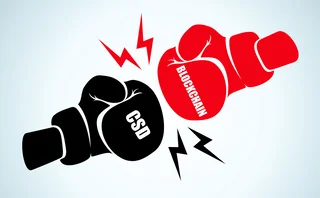
Shrinking cost of foreign exchange options
The cost of buying currency options has come down only "moderately" for clients in recent weeks and months, said options specialists interviewed by Risk’s sister publication FX Week . But in terms of the increased risk protection they currently provide for that cost, foreign exchange options are significantly better value than previously.
The relative value, however, of using currency options has shot up, as huge exchange rate volatility seen in the past three months has made the cost of an upfront premium comparatively less expensive than remaining exposed to large and unexpected currency moves.
"When currencies tend to be in a range, people don’t want to spend the money on options, said Justin Foley, head of global foreign exchange options and head of forex trading for North America at Bank One in Chicago. "But this year we have seen great moves and paying 1% or so for a premium on an option is worthwhile if the underlying position moves 6% or 7%."
This is one of the drivers in clients’ massive increase in options use so far this year. The Bank for International Settlements said in November that non-financial counterparties’ use of foreign exchange options was up 91% to $1.533 trillion for the first half year, compared with the previous six months, while anecdotal evidence from a range of banks indicates that they are seeing increased options flow from customers in excess of 50%.
"All of a sudden people who haven’t used them before are much more motivated to do so today as a result of the volatility in the markets," said Richard Giltner, global head of options at SG in Paris.
One factor making some options cheaper, he said, is the "typical margin narrowing that goes with the evolution of any product". This is especially true of ‘market veteran’ vanilla options.
With better transparency and education among clients, banks must offer more competitive prices. "When some exotic products came on to the market only banks knew how to value them," said Giltner. "Now a client can buy a bit of software that can do it for them and can follow their position," he explained.
Only users who have a paid subscription or are part of a corporate subscription are able to print or copy content.
To access these options, along with all other subscription benefits, please contact info@risk.net or view our subscription options here: http://subscriptions.risk.net/subscribe
You are currently unable to print this content. Please contact info@risk.net to find out more.
You are currently unable to copy this content. Please contact info@risk.net to find out more.
Copyright Infopro Digital Limited. All rights reserved.
As outlined in our terms and conditions, https://www.infopro-digital.com/terms-and-conditions/subscriptions/ (point 2.4), printing is limited to a single copy.
If you would like to purchase additional rights please email info@risk.net
Copyright Infopro Digital Limited. All rights reserved.
You may share this content using our article tools. As outlined in our terms and conditions, https://www.infopro-digital.com/terms-and-conditions/subscriptions/ (clause 2.4), an Authorised User may only make one copy of the materials for their own personal use. You must also comply with the restrictions in clause 2.5.
If you would like to purchase additional rights please email info@risk.net
More on Settlement risk
Margin settlement risk and its effect on CVA
Sponsored feature: CompatibL
CLS to replace core settlement system
Overhaul will leverage conventional technology rather than blockchain solution that underpins new CLSNet service
Netting no problem for blockchain, tech firms tell regulators
Firms say DLT can sit with current market practice, but instantaneous settlement 'not desirable'
Distributed ledger innovators imagine a world without CSDs
CSDs counter they fulfil functions blockchain cannot, and regulatory changes are needed to disintermediate them
Banks eye Traiana for EM forex netting service
Industry turns to utility as CLS emerging markets push stalls
Euroclear and Clearstream granted time to agree joint road map
Icma ERC continues to push for plans to improve Bridge settlement times
CLS facing obstacles adding RMB to its platform
RMB volumes set for growth but settlement remains an issue
FX clearing a priority for 2014, vows CLS chief
Working with banks and CCPs to facilitate central clearing of OTC forex options is 'high priority strategic initiative' for CLS this year, says chief executive David Puth







